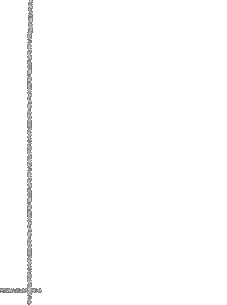 |
|||||||||||||||
 |
 |
 |
|||||||||||||
 |
|||||||||||||||
 |
|||||||||||||||
Download the Convert class here. JavaDocs are here.
The Convert class is useful for converting some data types to other data types. When writing applets, I’ve primarily used the toDouble() and toInt() methods. Syntax for use is
Convert.toType(argmument);
For example, when converting a String named inputString to a double, we would call the method as follows.
Convert.toDouble(inputString);
Currently available methods are summarized in the following table.
static public boolean |
isDouble(String snum) Checks to see if snum is number with a double value. This is useful for error checking input. |
static public long |
isInt(String snum) Checks to see if snum is a number with an integer value. This is useful for error checking input. |
static public double |
toDouble(int inum) Converts int to double |
static public double[] |
toDouble(Object object) Converts Object to double[] |
static public double |
toDouble(String snum) Converts String to double |
static public int |
toInt(double dnum) Truncates double to int |
static public int |
toInt(String snum) Converts String to int |
static public long |
toLong(String snum) Converts String to long |
static public int |
toRoundedInt(double dnum) Rounds double to int |
static public String |
toString(double dnum) Converts double to a String |
static public String |
toString(float fnum) Converts float to a String |
static public String |
toString(int inum) Converts int to a String |
Here's an example of converting a double to a String: double x=3.645;
String=stringx;
stringx=Convert.toString(x);
We can now output this using the setText() method. For example: label1.setText(stringx); int year;
String=stringyear;
stringyear=Convert.toString(year);
Here's an example of converting a float to a String: float x=3.645;
String=stringx;
stringx=Convert.toString(x);
But the primary use of the Convert class is to convert strings to ints, doubles, etc.
Here’s an example of converting the string “3” into an int. String string3=”3”;
int answer=Convert.toInt(string3);
answer will now have the integer value of 3.
I’ve used wrapper classes to construct the Convert.java class. Read on if you are interested in the details…
Other types of objects that we may encounter are ones defined by Double, and Integer classes. Note the capital letter at each of these classes. The class Double is known as a wrapper class for the primitive type double. Thus Double objects and double variables are two different things. The reason Java needs these classes is that it is an object-oriented language. With each of these classes is defined a myriad of different methods that operate on the Double object. But as you might expect there is a close relationship between an object defined by the Double class and a variable defined by the double primitive type. Here’s an example of how to define a Double object.
Double dval=new Double(70.5);
This statement constructs a Double object named dval and gives it the value of 70.5.
Now suppose you want to extract the value of dval and assign it to the double variable height. Here’s how to do this:
double height;
height=dval.doubleValue();
Or, you can combine these three statements into one: double height=(new Double(70.5)).doubleValue();
You should observe that doubleValue() is one of many methods that will operate on a Double object. There are parallel concepts for Integer objects, Float objects, etc.